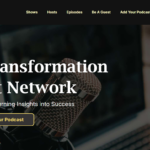Mindfulness and Transformation are now both terms that have become overused, and in that way that it becomes part of the marketing jargon for leadership, coaching and organisation culture professionals. They’re then used as a launch pad for a re-packaged value proposition a.k.a. sales pitch. The conversation needs to be brought back to the simple meaning and how they are directly connected.
To start that connection, we must first understand transforming as a process of moving from one state to another. Exactly like a caterpillar transforms into a butterfly, the potential for flight with a slimmer shape exists in the caterpillar, but can’t be realised until the transformation happens. So we simply think of transformation as being about how we move from the state we’re in to the new one we want to get to.
The mindfulness connection can be seen as two simple ideas
- Defining and sharing the gap from here to there
- Agreeing the steps in the change
Those steps create a shared mindfulness of the shift, and the effort needed to make it. Then we’re ready to plan: determine ways to get the steps done and who does what.
Understanding Mindful
Think of the term care-ful – giving attention to care, not letting habit, or emotion, or upset, lead us into carelessness. So with mindful, we give attention to our state of mind, so we are not easily led to mindless response. It’s really as simple as that – just by learning how to switch on the attention pattern, our mind’s state becomes visible and immediately improves.
Mindfulness can be a practice, like say, yoga. A key feature of yoga practice is no matter how often it is practised it doesn’t devolve into habits. In fact the opposite, it develops the mental discipline around alertness while practising slow breathing, posture and mental calmness when physically challenged.
So with mindfulness – we train our minds to be tools of the will rather than the more common alternative, where the wandering mind generates thoughts and impulses we may act on. Being mindful means being alert to everything around us, and is a perfectly natural state for a healthy undistracted mind.
What Mindfulness Isn’t
If mindfulness is seen as away to improve a behaviour or attitude, let’s say performance, then the effect is we’ll train our people to be mindful about performance, or whatever else we’ve decided we want as a changed behaviour.
Better to offer ways for people to develop mindfulness as a core state, a mental discipline. We want people to develop a new and useful behaviour, say, to be always conscious of how to interact with a customer, colleague or partner, or think of how to be of most value to your business. We’d like people to think more like business managers. Training for mindfulness will engender that naturally. Being mindful means being more conscious of the wider consequences of an interaction, the impact to a wider group of stakeholders. This is a quality some people have already, and we quickly notice as employees how much more useful and engaging their interactions seem.
Connecting Mindfulness with Digital Leadership Traits
So what has this got that’s relevant to your business, your mission, your leadership? Well, the traits most essential for leading the digital transformation
- authenticity – whatever we expect from others we must live up to ourselves
- being very clear on expectations and accountability
- driving the goals, not through a project spreadsheet but through active engagement and support of the team
- an open collaborative decision-making culture across team, across organisation, and partnerships
- adopting a lean philosophy as part of encouraging innovative & insightful thinking
Digital leadership demands many characteristics, the most important: Being a champion for the vision, developing others’ awareness, and shifting culture towards collaboration. Mindfulness will generate more sensitivity to the commitment of leaders & managers to real purpose, and so their behaviours and motivations will be adopted more quickly, with less need for instruction and reminders. By being authentic and committed, we create a feedback loop where authentic and purposeful leadership becomes a part of the culture.
That culture needs everyone involved to understand the mindset that embodies the characteristics of digital innovation. When we’re designing a new product or service for customer engagement, we focus on these qualities:
- Speed
- Simplicity
- Effectiveness
Well, no. All investment in training that improves awareness and adaptability has a return – but that must be backed up by the visible and actively reinforcing behaviours of your leaders, managers and coaches. When they are mindful, set clear and measurable goals, and set the same authenticity standards for themselves that they expect from others, then your training investment will be a positive step in culture change.
Being mindful is a habit that unravels habitual behaviours, and guides people to be more in the present moment. Any positive feedback on changed behaviours, no matter how small, generates more of the same, and so the
return keeps improving.
And of course, it’s nearly inexhaustible and, apart from the training and culture reinforcement investment, it’s free, as the top performing organisations already know.
Using Mindfulness to Drive Your Transformation
You probably see the connection now. Mindfulness brings collaboration, adaptability, new thinking and insights, and readiness to adopt change – all the more so when embedded in workplace culture. Your digital programme demands mindful leadership too, the commitment to positive change that keeps everyone on their toes, and balanced.
Some useful steps to consider for using mindfulness to help get the job done:
- Assessment of your teamwork and empowerment – how much is that embedded in culture?
- Re-thinking customer value, running innovation start-up workshops (if we were a start-up what new ideas would we use?)
- Start using transformative thinking in meetings, running labs, promote innovation by actively developing & supporting it
The culture assessment is probably the most critical step. If your workplace culture isn’t ready to engage in a major change project to adopt new practices and embrace innovative thinking, then there’s more work needed to achieve as state of readiness. The most important thing is to start.
The following links provide insights on how to get started:
- http://www.lifehack.org/articles/productivity/how-mindfulness-can-improve-our-focus-and-productivity.html Planning allows us to practice mindfulness by reducing the burdens that the mind needs to worry about.
- http://www.huffingtonpost.com/renee-cullinan/mindfulness_b_5976864.html The antidote for wasted productivity is mindfulness, the act of focusing attention and time in the present moment on what matters most.
- http://www.inc.com/ilya-pozin/can-mindfulness-improve-your-productivity.html Research from INSEAD Business School – just 15 minutes of mindful meditation such as concentrating on breathing can lead to more rational decision-making, more alertness, calmer work environment under pressure
- http://ourbusyminds.com/mindful-productivity/ Two benefits – better & longer concentration, and mental flexibility
- http://www.forbes.com/sites/vanessaloder/2015/03/25/the-most-surprising-way-to-increase-employee-wellbeing-and-productivity-that-costs-almost-nothing/ Research show costs savings “mindfulness lowers stress, increases focus, enhances compassion, and even alleviates depression among workers”
- https://michiganross.umich.edu/rtia-articles/case-mindful-engagement Programmes that teach mindfulness as a learning accelerator “More companies are embracing mindful engagement because they see it works”
- https://www.psychologytoday.com/blog/the-mindful-self-express/201206/the-mindful-manifesto-awareness-engagement-and-choice How to slow down and be more skillful & effective in your life





